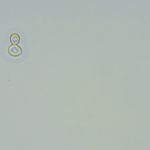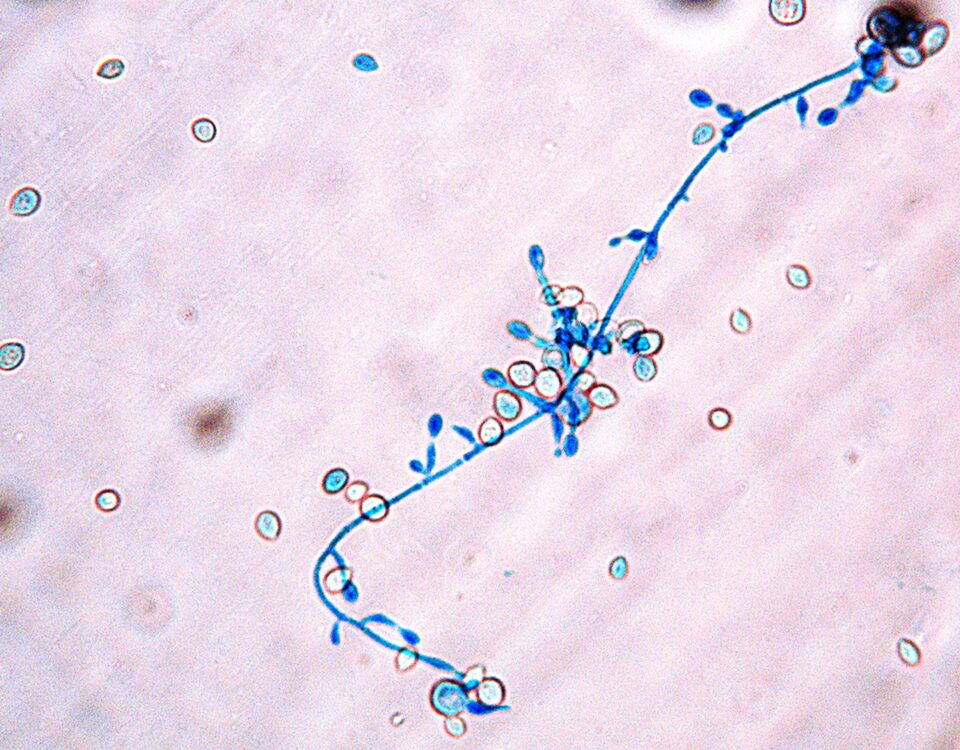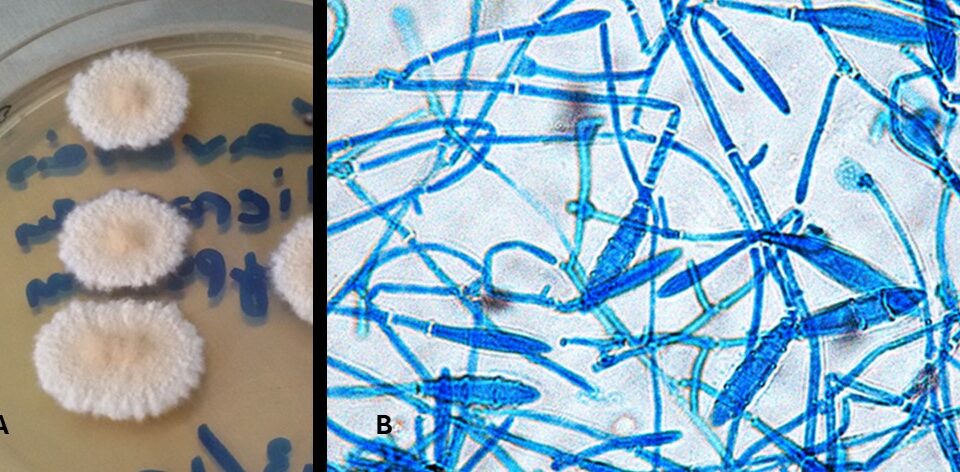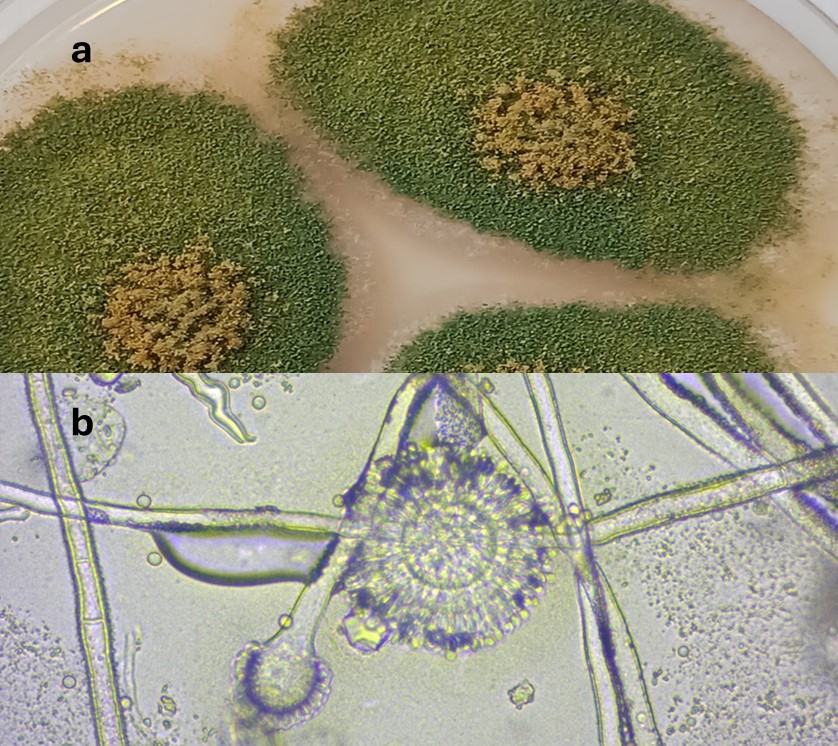
Laboratory and clinical aspects of the surveillance of healthcare-associated infections: a theoretical and practical approach, EUCIC Certificate Programme_2024-2026 – Athens, Greece (22 – 25 January 2025)
January 13, 2025
Cryptococcus neoformans
March 5, 2025

(Photos: Anastasia Spiliopoulou, Medical School, University of Patras)
Aspergillus terreus
The A. terreus species complex (SC) is a significant cause of invasive aspergillosis in immunocompromised patients. It ranks in isolation frequency after A. fumigatus SC and A. flavus SC. Less frequently, it has been associated with: allergic bronchopulmonary aspergillosis (ABPA), chronic aspergillosis, exacerbations of chronic obstructive pulmonary disease (COPD), external otitis.
The intrinsic resistance of A. terreus to AmB complicates treatment, necessitating species-level identification of Aspergillus spp. for optimal management.
[Case editor: Anastasia Spiliopoulou, Assistant Professor of Microbiology, Medical School, University of Patras]
References
Thakur R, Shishodia SK, Sharma A, Chauhan A, Kaur S, Shankar J. Accelerating the understanding of Aspergillus terreus: Epidemiology, physiology, immunology and advances. Curr Res Microb Sci. 2024; 6:100220. doi: 10.1016/j.crmicr.2024.100220 .
Lass-Flörl C, Dietl AM, Kontoyiannis DP, Brock M. Aspergillus terreus Species Complex. Clin Microbiol Rev. 2021; 34(4):e0031120. doi: 10.1128/CMR.00311-20.



